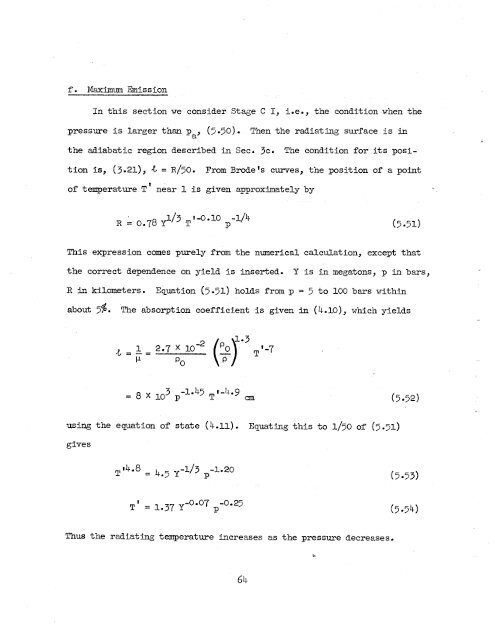Theory of the Fireball
Theory of the Fireball
Theory of the Fireball
Create successful ePaper yourself
Turn your PDF publications into a flip-book with our unique Google optimized e-Paper software.
pressure is larger than pa, (5.50) . Then <strong>the</strong> radiating surface is in<br />
<strong>the</strong> adiabatic region described in Sec. 3c. The condition for its posi-<br />
tion is, (3.21), t = R/5O. From Brode's curves, <strong>the</strong> position <strong>of</strong> a point<br />
<strong>of</strong> temperature T ' near 1 is given approximately by<br />
1/3 r-0.10<br />
R = 0.78<br />
-1/4<br />
Y T P<br />
This expression comes purely from <strong>the</strong> numerical calculation, except thct<br />
<strong>the</strong> correct dependence on yield is inserted. Y is in megatons, p in bars,<br />
R in kilometers. Equation (5.51) holds from p = 5 to 100 bars within<br />
about 5%. The absorption coefficient is given in (4.10), which yields<br />
using t'ne equation <strong>of</strong> state (4.11). Equating this to 1/50 <strong>of</strong> (5.51)<br />
gives<br />
Tr408 = 4.5 y -1/3 P -1.20<br />
Thus <strong>the</strong> radiating temperature increases as <strong>the</strong> pressure decreases.<br />
64<br />
b
















